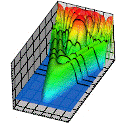Department of Physics and Astronomy: Publications and Other Research

Anthony F. Starace Publications
Thermal entanglement of two interacting qubits in a static magnetic field
Document Type Article
Published in The European Physical Journal D 44 (2007) , pp. 389–400; DOI: 10.1140/epjd/e2007-00207-5 Copyright © EDP Sciences, Società Italiana di Fisica, Springer-Verlag 2007. Used by permission. http://epjd.edpsciences.org/articles/epjd/pdf/2007/09/d07116.pdf
Abstract
We study systematically the entanglement of a two-qubit Heisenberg XY model in thermal equilibrium in the presence of an external arbitrarily-directed static magnetic field, thereby generalizing our prior work [G. Lagmago Kamta, A. F. Starace, Phys. Rev. Lett. 88, 107901 (2002)]. We show that a magnetic field having a component in the xy-plane containing the spin-spin interaction components produces different entanglement for ferromagnetic (FM) and antiferromagnetic (AFM) couplings. In particular, quantum phase transitions induced by the magnetic field-driven level crossings always occur for the AFM-coupled qubits, but only occur in FM-coupled qubits when the coupling is of Ising type or when the magnetic field has a component perpendicular to the xy-plane. When the magnetic field has a component in the xy-plane, the cut-off temperature above which the entanglement of both the FM-and AFM-coupled qubits vanishes can always be controlled using the magnetic field for any value of the XY coupling anisotropy parameter. Thus, by adjusting the magnetic field, an entangled state of two spins can be produced at any finite temperature. Finally, we find that a higher level of entanglement is achieved when the in-plane component of the magnetic field is parallel to the direction in which the XY exchange coupling is smaller.

